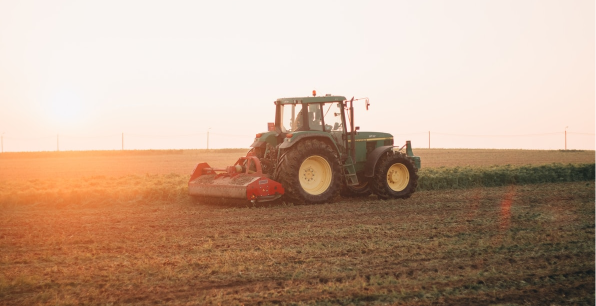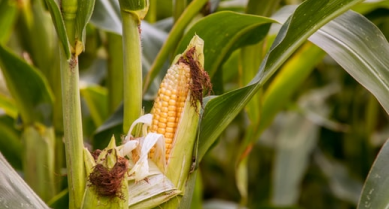Closing the Yield Gap with Big Data
Agrimetrics will work with YEN to build a valuable dataset, improve data collection and calculate potential yield automatically.
As the harvest comes to a conclusion, Daniel Kindred of ADAS awaits the outcomes for the farmers competing in the Yield Enhancement Network (YEN). This is the last year that the entries will be manually entered, as in future ADAS will be collaborating with Agrimetrics, to automate the process to improve data capture from YEN entrants and to introduce online communications with entrants on crop progress ahead of next year’s competitions.
Daniel comments: “Early cereal yield returns this year suggest that crops have done slightly better than last year, despite dry weather in spring which will have had an impact on many entrants yield potential. Oilseed yields are looking good, with many entrants achieving over 5 t/ha. As cereal and oilseed crop samples start to be analysed, we will soon get a better idea of how crops performed.”

YEN is energising yield enhancement
YEN was set up to close the ‘yield gap’ the difference between the yield that is theoretically possible in a field and that, which is achieved in practice.
“The YEN was set up to try and energize and bring some focus to yield enhancement, to get people talking about it and get farmers and industry owning it, and to link scientists, research and industry together,” Daniel explains. “Innovation really happens when farmers collaborate with the industry in the field and on the farm.”
YEN, created during the Olympics year of 2012, energises and engages farmers by making yield enhancement a competition.
“The idea for YEN came out of a sense of frustration that wheat yields had failed to increase over the last twenty years,” Daniel explains. “However, there were considerable variations between farmers on similar land suggesting that it was possible to improve performance.”
“The competition element gave us a focus for getting farmers engaged, and having yields and associated data that we can trust. This would allow us to identify the innovators and understanding what’s driving the differences in yield that we’re seeing.”
After attempts to have YEN publicly funded, ADAS went out to industry, gaining a number of sponsors including: Bayer, BASF, Frontier, Hutchinsons, Syngenta and Yara.
Where Agrimetrics comes in
Agrimetrics has been brought in to build a valuable dataset, to improve data collection and calculate potential yield automatically.
“Agrimetrics will provide us with the ability to interact with the users, get the data online and link it to soil and weather datasets,” explains Daniel. “We will also be able to model the data and improve the ability to identify factors that improve the yield.
“It is disjointed at the moment – a farmer sends us the details and this is entered on to an excel spreadsheet and then when we get time we put spreadsheets together and get back to the farmer with what their potential yield is.
“Agrimetrics has access to underlying soil datasets and the long-term weather data and seasonal data so we can use this to calculate the potential yield automatically.
“Ultimately a lot of what we do should be interactive, so as soon as someone puts information into the website, it should automatically say what potential yield and working with Agrimetrics will allow us to do this.”
This is will enable us to improve interaction with the farmers, capture data, and ultimately analyse it in the most appropriate way and build a valuable data set.”

Yield difference and potential yield
The ability to analyse these datasets is critical. There is limited understanding behind the differences in yield between farms and between years.
Daniel continues: “During the 2015 AHDB variety trials, some averaged about 8 tonnes per hectare, while others averaged 16 tonnes per hectare. The UK average yield for wheat is 8 tonnes a hectare, and has been for 20 years or more.
“No one really understands what causes the differences. Is it the soil, the region, the weather, or farmer skill? What are individual decisions being made about that crop that really matter? That’s our aspiration, to get to that.”
ADAS is using the concept of potential yield, which looks at the biophysical capability – the available light and water.
“We have calculated a biophysical maximum of around 20 tonnes per hectare. But how much is achievable depends on the local conditions. We calculate this for every field that’s entered into the YEN competition. So as well as having an award for total yield we also calculate percentage of potential yield, so even if you’re on bad soil you’ve still got the chance to win. As it was an Olympic year we had bronze, silver and gold awards in each category.”
A report for every farmer
“We collect a lot of extra data about how the crop is grown, gather digital photographs and count the ears,” says Daniel. “We’ll take a crop sample just before harvest and a grain sample from the combine as well, and analyse those. This basically deconstructs the crop to learn about the yield, in terms of grain size, number of grains per ear, harvest index (the amount of grain versus the amount of straw) and the biomass and nitrogen uptake.
“With this data we produce a report for every farmer or every entry, and that data set allows us to understand what’s driving the variation of the yields across the whole group.
“That’s where Agrimetrics comes in, and with the sponsors committing for three years we have the potential to take a longer view.”
International entrants
The YEN has over 200 entries this year, and ADAS are looking to increase this alongside the international reach. In fact, last year’s highest yield came from a field in Denmark.
“An international example is a company called Tradecorp that has just joined the YEN, and they’ll be entering crops from Ireland, Belgium, Holland, and the UK. So it is wider than just the UK,” says Daniel.
“The weather data for other countries is a bit tricky. Entrants tell us what the soil types are, but we need the weather data to be able to do the calculations. This will come from the Agrimetrics data and we are looking at using satellite imaging and estimates for growth stage.”
“Then you really start getting into Big Data, and its applications and uses.
“My hope is that what we’re doing here with the YEN and with Agrimetrics is a stepping stone – at the moment what we’re doing with the YEN is deep and narrow, but I think there’s an opportunity for something broader but a bit shallower.”
New for 2017
During 2017, the YEN is providing a full nutritional analysis on grain samples, with NIAB providing grain shape and size reports. Nabim is also on board; the organisation for millers and bakers in the UK. It is also the first time that an oilseed rape competition has been held – Oilseed YEN.
Daniel continues: “The plan is to have an innovation award in the YEN as well to encourage those that are doing things differently.
“The data we generate only really allows us to put up hypotheses. It doesn’t, ultimately, tell us what the right decisions are. However, it’s perfectly possible to determine that just by doing something different to one tramline or a few tramlines in a field.
“So we are working with farmers on something called the Agronomics Project, which has developed that approach and the protocols and the datasets that we need to do that effectively.
“The future is to bring together groups of farmers and agree to test things in a joined up way, learning together.”
Other articles that might interest you

AI identifies crops from space with 90% accuracy
Agrimetrics launches CropLens AI, a proprietary algorithm that identifies crop types from space.

ClearSky: Cloud free satellite data for agriculture
ClearSky's artificial intelligence removes a major barrier to the efficacy of satellite

ClearSky: Cloud free satellite data for agriculture
ClearSky's artificial intelligence removes a major barrier to the efficacy of satellite

Agrimetrics partners with Airbus to reduce cost
Crop Analytics, a crop and field analytics package from Airbus, is now available at a new, lower price.



